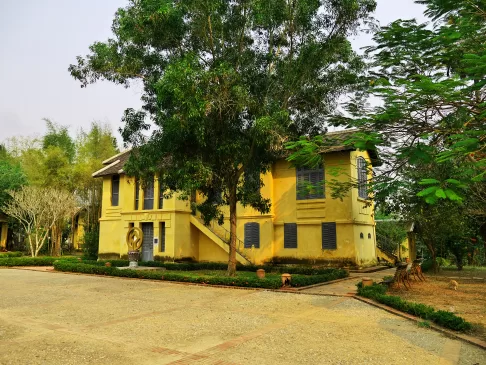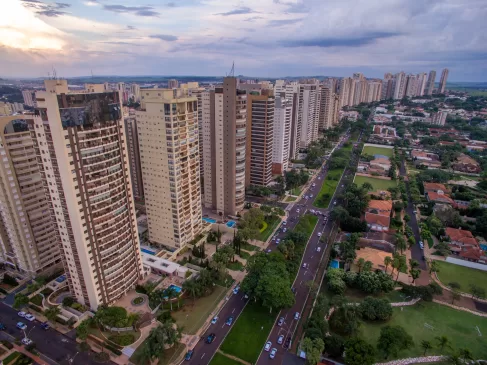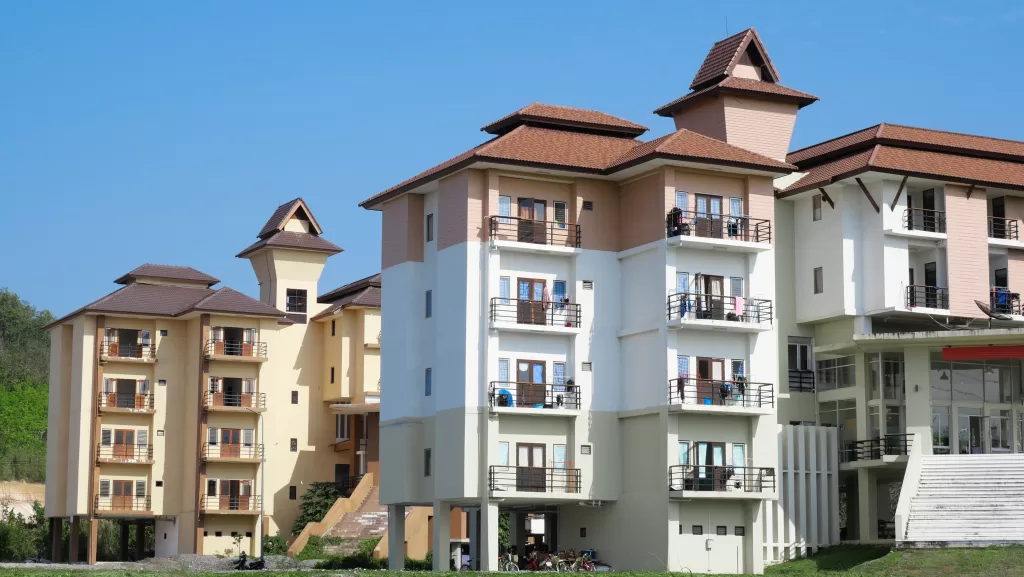When it comes to building a home, your decision on the types of houses often comes down to a balance between budget and personal preferences. Whether you choose a compact studio apartment in a bustling city or a luxurious villa by the beach, each option is influenced by factors like cost, available space and lifestyle needs. Understanding the different types of houses and the materials used to build them can help you make an informed decision that best suits your requirements.
What is a House?
A house is defined as a building or part of a building that functions as a distinct unit. It is typically identified by having a separate main entrance accessible from a road, common courtyard or staircase. This definition encompasses spaces that may be inhabited or vacant and those serving residential, non-residential or mixed purposes.
It can also be a distinct structure with its own separate entrance and comprehensive facilities. These types of houses ensure that the dwelling unit and the entire house structure are integrated. This means that both the physical building and the functional living spaces are part of the same structure. A dwelling unit typically includes essential spaces such as living rooms, a kitchen, bathrooms, a storeroom and a verandah (whether open or enclosed).
Get personalised assistance from JK Cement BuildXperts to decide which types of houses are suitable for you!
Different Types of Houses You Should Know
Let us explore different types of houses you can choose from:
Bungalows

These types of houses are traditionally compact in size but are now increasingly available as spacious family homes. Characterised by their simplicity and efficient layout, bungalows are often designed for solitary family living. These types of houses are commonly found in non-urban areas of India, where open spaces and larger plots allow for sprawling structures. In recent years, bungalows have gained popularity in urban settings as well. These types of houses are seamlessly integrated with modern architectural designs comprising contemporary amenities to suit urban lifestyles.
Apartments and Flats

These types of houses are multi-unit residential accommodations housed within a single building. Each apartment functions as an independent dwelling. It comprises separate rooms or a set of rooms designed for individuals or families. These types of houses have become the most popular choice in urban India due to the growing demand for efficient and affordable living spaces in densely populated areas.
Modern apartment buildings are typically multi-storied and offer a variety of units tailored to different needs and preferences. These come in different types of houses options including penthouses, basement suites, studio flats and individual flats. Apartments and flats often come with shared amenities like elevators, parking spaces, security systems and recreational areas.
Villas
Villas are luxurious homes preferred for their spaciousness and exclusivity. These types of houses are associated with upper-class living. They range from modestly large residences to ultra-luxurious estates featuring private lawns, gardens, swimming pools and driveways. The private environment makes villas a popular choice among travellers and residents seeking a blend of comfort and nature. Villas are also gaining popularity as they offer rejuvenating green surroundings. These types of houses are often favoured by high-end buyers and vacationers.
Condominiums/Housing Complexes/Societies
Condominiums are individually owned housing units within a larger complex. In these types of houses, owners share common amenities such as clubhouses, swimming pools, sports facilities and landscaped gardens. These complexes are managed collectively by a condominium association, which oversees maintenance and upkeep. Housing societies are popular in urban areas for their convenience, security and community living. They often include modern facilities like gyms and playgrounds to provide a lifestyle-focused housing option.
Farmhouses
Farmhouses and vacation homes are located away from the hustle and bustle of urban centres. These types of houses in India are part of organised housing developments or standalone investments. Farmhouses serve as getaway options, surrounded by greenery and designed for leisure. However, their infrastructure often requires independent development by owners.
Huts
Huts are traditional shelters found predominantly in rural and tribal areas of India. These types of houses are constructed using locally sourced materials like mud, bricks, wood and leaves. These are designed to suit the climate, offering natural cooling during summers. Modern iterations of huts may include features like chimneys for smoke ventilation. They remain an integral part of rural India’s housing landscape, showcasing cultural heritage and resourcefulness.
Eco-friendly Homes
Eco-friendly homes are gaining traction as sustainable living becomes a priority. These types of houses integrate environmentally conscious practices. For example, using renewable energy sources, water recycling systems, efficient waste management and eco-friendly building materials. Designed for energy efficiency and minimal environmental impact, these homes reflect a growing awareness among Indians to contribute to a greener future. The surge in sustainable housing has also driven architectural innovations, blending functionality with environmental stewardship.
Row Houses
Row houses are the types of homes that are built in a continuous line with shared side walls and open spaces only at the front and rear. A row house plan is suitable for smaller plot sizes, with windows and ventilation primarily at the front and back. Despite limited privacy due to close proximity, row houses offer several advantages, including cost efficiency, lower maintenance expenses and the opportunity for individual ownership. Each unit comes with a private plot and offers privacy.
Building Materials Used for Different Kinds of Houses in India
The choice of building materials in India depends on the type of house being constructed, climatic conditions, availability of resources and the construction category. Broadly, buildings can be categorised into five types of construction. This includes non-combustible, fire-resistive, heavy timber, wood-framed and ordinary. Each construction type utilises a specific combination of materials to ensure durability, functionality and safety.
Choose JK Cement for Your House Building Needs
JK Cement offers a comprehensive range of products and services to support every stage of house construction. Whether it is durable Grey Cement, premium White Cement, versatile JK Maxx Paints, or specialised products like Tile Adhesives, Construction Chemicals and Wood Finishes, JK Cement has all you need. Their services, including a House Construction Cost Calculator, Product Selector, Store Locator, and access to construction professionals, simplify the building process and ensure top-notch quality.
Get your super protect cement online from JK Cement. Simply fill out the form to get started!
FAQs
Which styles of homes are best in India?
The right types of houses in India will depend on your needs and preferences. You may consider villas and bungalows for luxury and space, while apartments and studio flats suit urban living.
What is the most common house in India?
Apartments are the most common type of housing in urban India due to affordability, availability and convenience.
What are some materials commonly used in India to construct different types of houses?
Stone, brick, lime, cement, metal, timber, sand and aggregates are commonly used materials.
What are traditional houses in India?
Traditional houses in India include huts, haveli, mud houses and tribal dwellings, often made with locally available materials like mud, thatch and wood.
How does a townhouse differ from a row house?
Townhouses are the types of houses which are multi-storied and share one or two walls with adjacent homes, offering individual ownership. Whereas a row house refers to a series of identical homes in a row with shared walls and a uniform design.
